Few aphorisms have enjoyed a greater career than that of Georges-Louis Leclerc, Comte de Buffon, who was inducted into L’Académie Française in 1753. His statement that ‘the style is the man himself’ – with all its obscurity – is especially oppressive in a time when organised style movements are outdated. If there is no style of the time to act as a great narrative or an intellectual framework defining the artist’s creative parameters, then artists arrive at a tormenting crossroads. They may either build a universe out of their own style (in the spirit of faith in art’s immanent nature); or they may seek some basis, something outside themselves to grab hold of (inevitably making their output questionable for all those who doubt the existence of an exterior foundation). However controversial it may seem, Marcell Jankovics, who died last year, made some elegiac statements at the end of his life that allow us to deduce how he experienced this theoretical, artistic dilemma as a personal inner conflict, despite general and widespread knowledge of his oeuvre.
When MMA Kiadó released the volume spanning his lifework and supplemented with studies, what pained Marcell Jankovics was that he never had a style. Few took this remark seriously. Nonetheless, he truly had something at stake – whether he had any relevance on account of his substantial creative career. He expressed the very same complaint earlier, on the occasion of his lifework’s exhibition at Art Hall. (The exhibit entitled Life Praxes II was opened on 6 December 2019, by curators Réka Fazakas and Mihály Medve with the aid of György Szemadám as an expert advisor). ‘I have no formulated style that I am able to force upon a given theme.
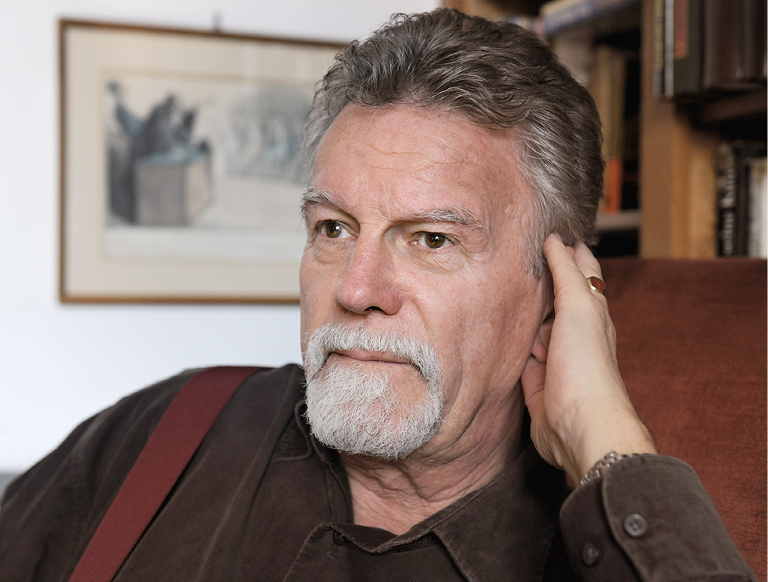
Photo: MTI/ Tibor Oláh
There are famous graphic artists whose work can be identified at first glance. If you look over the Trianon pictures on display now, it is not certain you will say that I produced them. I draw in a variety of ways, and this variety arises from a “lack of discipline”. Having graduated, I became an assistant, then a maker of animated films, although there were several fine artists among my ancestors. There is a professional reason as well. As an assigned drawer, I had to match the style of various directors. In my childhood, I already drew better than average. At the Benedictine Secondary School of Pannonhalma, I was given the decoration tasks, and I had to illustrate the priests’ poems, but I never developed a style under the guidance of a master. Pál Kő is a very good friend of mine, and his sculptures are unmistakable, just as Miklós Melocco has completely clear indications of style. My creative style is most apparent in my choice of themes’ (Seres 2021). When we spoke personally, he mentioned in a similar tone the examples of Líviusz Gyulai and János Kass, the definitive graphic artists and illustrators of the period, whose styles could be recognized with one glance at their artwork (Lukácsy 2021). What could be the reason for Marcell Jankovics’ unease?

Fig.1. The Tragedy of Man – Scene 1: Creation
The dilemma, clearly controversial in nature and only capable of being unravelled theoretically, can be expressed thus: Is it possible for an artist with a conservative worldview to be postmodern? What makes the issue especially tense is the following question, which has bearing both personally and on art history at the same time: Does a conservative mindset ‘traditionally’ exclude one from the label of postmodernism? A typical expression of this exclusion comes from literary critic Márton Falusi: ‘Postmodern art perfectly takes the form of the “lukewarm middlebrow culture” alienated from us, because it does not strive to depict matters so that we may recognise and transcend them. Instead, it subordinates itself to hard and fast rules, incorporating, distorting and overwriting outside texts. “Lukewarm middlebrow culture” is not naturally comprised of classic works considered fundamental. It is the manner whereby tradition is used, unconcerned with the challenges of hic et nunc. In fact, it makes a mockery of tradition – not pondering over it, merely making it its plaything’ (Falusi 2011, 62). Marcell Jankovics himself tried resolving this contradiction the following way: ‘I quite like the novel Celestial Harmonies and the bagatelles of Péter Esterházy, one of Hungary’s most confirmed postmodern figures. As for me, I do not feel the postmodern label fits. Postmodern has become a sort of worldview. In that sense, I find it unpleasant. If I were to label myself, I would describe my disposition as liberal, patriotic and Christian. However, I have thought much over the question of style, and I have realised that it is not which graphical techniques I use that is important, but the thought with which I approach my subject. Many say that, when something bears traces of my handiwork, it is unmistakable. It is interesting that all of this arises from the fact that I do not stick to a single style per se’ (Lukácsy 2021). In the following, I will endeavour to clarify Marcell Jankovics’ aversion to postmodernism and his art’s relation to postmodern style attributes.
The problem lies precisely in the concept of style. Firstly, its overemphasis would lead us into the (self-)scrutiny that tormented Marcell Jankovics (as his elegiac passages cited above reveal). Secondly, with the concept of style, we would simply be unable to grasp the relevant intellectual concept of Marcell Jankovics’ artwork on a theoretical level. In the course of a work’s creation, as well as in its comprehension, style only becomes a valid concept in terms of its local value. Erwin Panofsky’s thoughts on art history come to our aid when determining this ‘local value’, because, during his research into the seemingly distant Renaissance, he was the one who framed the concept of style as part of a hierarchy, thereby depriving it of its dominant theoretical role. Panofsky introduced three distinct stages in terms of the artwork’s reception and interpretation. For the first (pre-iconographic) stage, Panofsky used the term history of style. The secondary iconographic stage deals with the history of types. Only with knowledge of the latter can iconologic investigation come about. My supposition is that this works similarly with artistic disposition as well. In the course of Marcell Jankovics’ theoretical, cultural and educational work, he primarily approached his subjects from an iconographic aspect. We may define his popular Collection of Symbols as conceptual iconography, but also his highly valuable series devoted to the description of churches in Upper Hungary [former Hungarian territory in present-day Slovakia] (Jankovics and Méry 2020).
At the first and actually superficial stage of a Panofsky-style hierarchy, iconography plays a role. ‘The suffix –graphy originates from graphein, the Greek verb for to write, indicating a purely descriptive and possibly static method. Based on this, iconography is the description and categorisation of depictions, just as ethnography is the description and categorisation of human races. It is a bounded territory of knowledge, seemingly serving to inform us where, when and by what means certain themes were cloaked in visual expression. In short, iconography deals solely with the category of motifs that comprise the artwork’s inner content – that which must be expressed by all means – if our purpose is to grasp the picture’s content in an articulate and communicable way’ (Panofsky 1984, 257). From Marcell Jankovics’ statements and later analyses of his pieces, it becomes clear why interpretation runs into a dead end if we approach his work only in terms of iconography. (This is the activity we refer to as criticism in our country, practising a type of comparative analysis or statistical analysis of the stylistic elements. After all, the work of art’s success is evaluated on the basis of its iconographic ingenuity.) Of course, this activity has its uses, but it is incapable of achieving tangible results if we are seeking what makes Marcell Jankovics’ oeuvre truly unique. It is much more useful to view his lifework from the third level of Panofsky’s observational pyramid – that is, from the iconological perspective located at its peak. ‘While the suffix -graphy refers to something that is descriptive in nature, the suffix –logy (which comes from logos and means thought or idea) signifies something interpretive’ (Panofsky 1984, 257). Naturally, there are some preconditions for ideological perception. The most obvious one is also the most problematic when it comes to contemporary art: the presumption of logos. The wealth of iconography often distracts us from the feeling of emptiness that arises when there is no logos behind graphein – or, if there is, this thought or idea is simply empty, shallow or hollow (deconstructed). In Marcell Jankovics’ case, this is precisely the point. From time to time, the graphein is not original, but this leads us to recognise the originality of the logos. His artwork’s vision is not iconographic, but iconological. It is Marcell Jankovics’ reflective, synthesising tendency that is actually important to us.
At the iconographic level, Marcell Jankovics’ art does show signs of postmodernism. It is commonly known to critics that, in many respects, Marcell Jankovics’ process as an animation director is related to what is described in literature as wordplay or the incorporation of an outside text. Naturally, in his case, this method of quoting deserves a separate study. What is of interest to us is the quoting attitude itself. The first decisive step in his career is also worth regarding in this light. Painter György Szemadám, Jankovics’ intellectual companion to the end of his life, recalls it thus: ‘The big change occurred in 1968. That was Air India. […] Jankovics got the commission, because the traffic company’s artistic director saw the film Transformations by György Kovásznai. He wanted to have an advertisement made in that style, but Kovásznai said no. Knowing Jankovics’ hard work, his speed and his ability to produce the given assignment in any graphic style, the studio’s leadership entrusted the work to him’ (Szemadám 1987, 9 – author’s emphasis). Clearly, this ‘any style’ was a token of respect. Nevertheless, despite the intention, it expresses the sense of Jankovics’ lack of a signature style. It is well-known that even his first full-length animated film in 1973, John, the Valiant, quoted the visual world of contemporary animation and music video. Marcell Jankovics lifted the pictorial expression from The Beatles’ Yellow Submarine video clip and full-length animated feature to make his adaptation of Sándor Petőfi’s narrative poem. German pop artist Heinz Edelmann’s graphic designs had an effect on Jankovics – not just visually (Neo-Art Nouveau style), but also intellectually. For one thing, in both cases, the protagonist was depicted from a low angle with both feet on the ground (practical, his actions rooted in reality). At the same time, thanks to the depiction’s horizontal orientation – that is, the distorted perspective of the figure – it is open to the vertical axis (celestial, transcendent, cosmic).
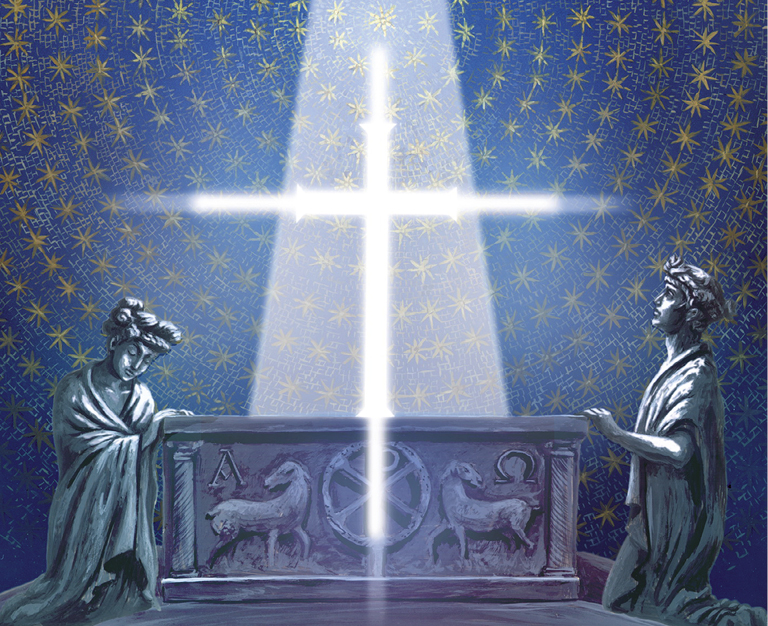
Fig. 2. The Tragedy of Man – Scene 6: Hercules at the Crossroads
The list of similar quotations from Jankovics’ oeuvre is practically endless. For example, his opus entitled The Tragedy of Man, based on Imre Madách’s work and completed over thirty years, commits itself to a full military-style inspection of these quotations and motifs. ‘The influence of Henri Rousseau comes through in the depiction of the Garden of Eden, while there is a pronounced use of Impressionistic music (Debussy and Ravel), particularly in the instrumentation’ (Varga 2019, 48–49). After Adam and Eve’s expulsion from Paradise, there is a sort of luminescent mirror which reflects a distorted image of the reality that surrounds them, similar to Surrealist Desmond Morris’ style of expression. In the London scene, these motifs’ dance of death is already clear. The figures of Ferenc Puskás, Béla Bartók and Zoltán Kodály, Marilyn Monroe, James Bond or Elvis Presley are not merely present onscreen, but appear as iconographic quotations – in iconic depictions now inseparable from the given individual. (More precisely, it is the memory of them preserved in pictures.) Yet, on occasion, the quotations do not simply strive for resemblance. They are not intended as mere iconographic references, but ‘literal’ references. The Santa Claus character in Marcell Jankovics’ Tragedy is a copy of the Coca-Cola Company’s ad figure. The visual source material for his last work, an adaptation of János Arany’s Toldi, covers remarkably vast territory. Besides the Illuminated Chronicle or the Manesse Codex from the time of Hungary’s King Louis the Great, he draws from Pinterest, a public image-sharing service on the internet.
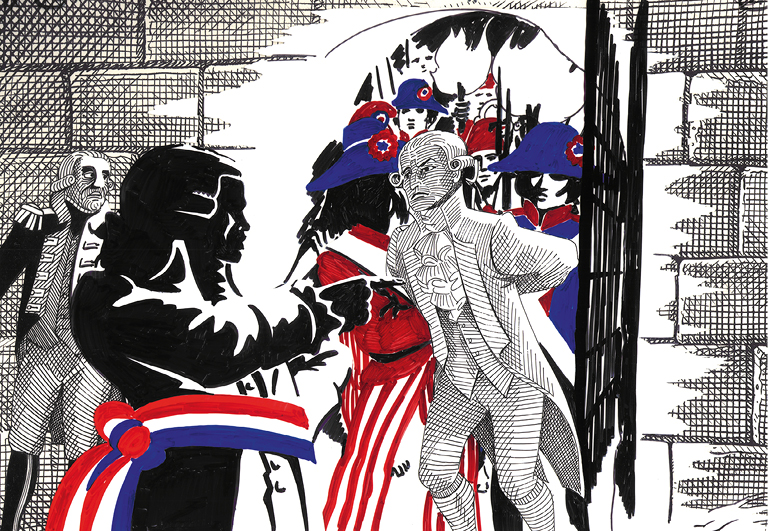
Fig. 3. The Tragedy of Man – Scene 9: Revolution
What he draws from his sources may raise many questions – from evocation to plagiarism – still, one thing is certain. This artistic process builds not upon his signature style, but upon summoning outside cultural references and thus activating their meaning and content. This is clearly a feature of postmodernism. Yet, in Jankovics’ case, this feature is not absolute. This is proved by the classic Son of the White Mare, the crowning jewel of his lifework, as well as by his book illustrations. Indeed, in these instances, there are no similar visual quotations or patterns to uncover; and still, they are perceptibly the work of the same artist. Son of the White Mare naturally references the (visual) symbolism of Hungarian, Hun and Avar creation myths, but these quotations are not arbitrary. They are necessary on account of the film’s archetypal figures and its weaving of mythical plots. ‘This is one of most Hungarian hero tales, and it is featured under that heading as a stand-alone type of tale in János Berze-Nagy catalogue of myths. […] The tale centres upon a white mare that miraculously becomes pregnant, and its son or sons perform herculean labours’ (Jankovics 2004, 91). What is peculiar about Marcell Jankovics’ process is that the more he adheres to the iconography and symbolism of this uniquely Hungarian legendary world, the more general it becomes, as ancient myths are nourished by the same common source. In his study written about Son of the White Mare, ‘Folktale and Animated Film’, ethnologist and folklorist Mihály Hoppál surveys the precise territory of this common source when comparing the son’s return to the myths of peoples from the Russian and Uzbek plains, as well as to motifs from Greek mythology. He draws a typical conclusion at the end of his comparative analysis: ‘It is apparent, with the aid of a single motif, how the mythical worlds of Ancient Greek and the East are connected. Thus, a theme pulled from national folklore speaks an international language, comprehensible to the descendents of other peoples’ (Hoppál 1998, 137). Hence, Marcell Jankovics draws from a legendary source that has its own iconography. This is not a feature of postmodernism. The storyteller of antiquity also alludes to common (as well as invisible) iconography when he begins speaking about Odysseus. This community-consciousness is present in Marcell Jankovics’ art; yet, it presents an art theory challenge, since Jankovics no longer counted upon the common (knowledge, mythology, iconography) to exist in the community and in the nation the same way it resided in him. One of the most beautiful aspects of his lifework is that he presumed and intended to demonstrate all this: that, despite all appearances, the original common still indeed exists; that deconstruction leads nowhere; that the hermeneutical worldview is valid after all, in spite of the fashionable ironic and critical approach; that there is room for education (upbringing or Bildung) and the spread of knowledge; and that identity does not have to be worked out or played with, since we already recognise it – our identity is given from the start.
That is why Marcell Jankovics’ art can only be termed postmodern in the sense of its characteristic tendency to classicise – that is, through quotation, he also builds up a sort of canon. At the same time, the way he achieves all this – constituting a spiritual authority – is alien to postmodernism. With him, the quotations always have local value. By referencing what is common, every quotation finds its place. Speaking about John, the Valiant, György Szemadám called this common quality inevitable (in the sense of physical laws) and unchanging[1] (Szemadám 1987, 23). In other words, with Jankovics, the quotations cannot withstand an (autonomous) authorial power; instead, they are subordinate to common knowledge. In terms of Panofsky’s construction, this means Jankovics can be regarded as postmodern at no higher than the iconographic (first) level. At the iconologic and reflective level, however, his approach is absolutely not postmodern. So what it is, then?
From Lyotard’s explanation of the postmodernism concept, it is clear that Marcell Jankovics’ disposition is removed from postmodernism. ‘Simplified to the extreme, I define postmodern as insecurity in the face of grand narratives. Undoubtedly, this insecurity is the result of scientific development, which is a condition for our development at the same time’ (Lyotard 1993, 8). Marcell Jankovics always found support in grand narratives, even if the narrative framework (worldview) is difficult to outline.
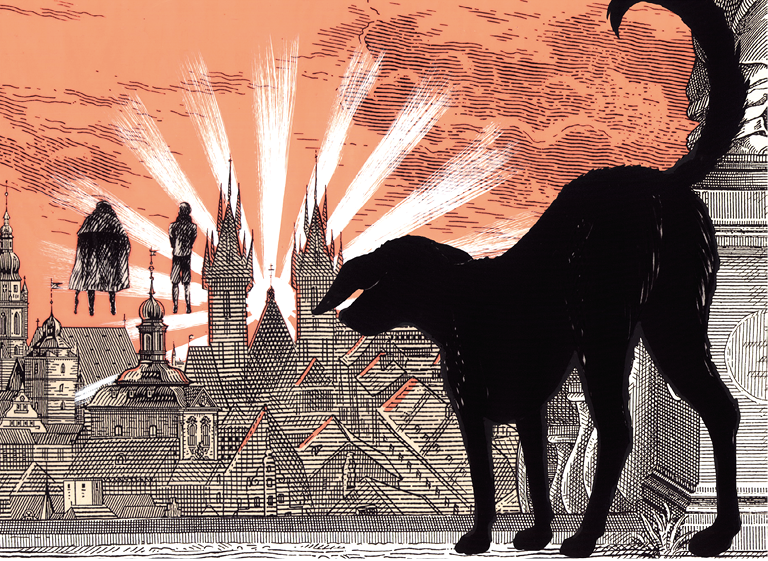
Fig. 4. The Tragedy of Man – Scene 10: More Light
He identified as a cultural Christian. ‘I have been a believer starting from my mother’s womb.’ Yet, his religious convictions could not fit in any denomination of institutionalised (and, in his opinion, derailed) Christianity; whereas, Gnostic and universal faiths were neither revolutionary nor rebellious – merely doubting[2] (Jankovics 1996, 198–237). Or struggling. His book about the story preserved in the ‘Legend of Saint László’ mural elaborates upon this struggle. The clash of Saint László and the Cuman warrior is a parable of Hungarian history, for which there is even an astrological explanation; still, most importantly, it is also an inner spiritual struggle. It is the uniquely resonant clash of the Christian and pagan world in the soul of Mankind. Yet, Marcell Jankovics is a pessimist. For him, the legend does not end with Saint László’s victory, but with a surrender of identity: ‘That was the fate of the legend-frescoes. They got plastered over; or, in the course of renovations, they vanished for centuries before the believers’ eyes’ (Jankovics 1987, 91). What was perhaps important to Marcell Jankovics, in terms of his faith and its relation to his art, was that the religious – be they Christian or Chinese Taoist – should declare the same ethical foundation: ‘Technological development separates Mankind from the humility needed to behave and act properly in the world. […] Hence, the greatest sin that people can commit against themselves and the world is not to accept the world’s obvious, inevitable order and to try forcing their own will upon the world. That is like Mankind wishing to rise above God’ (Kovács 2001, 14). In Marcell Jankovics’ art, this worldview is manifest in the orientation toward a cosmic order.
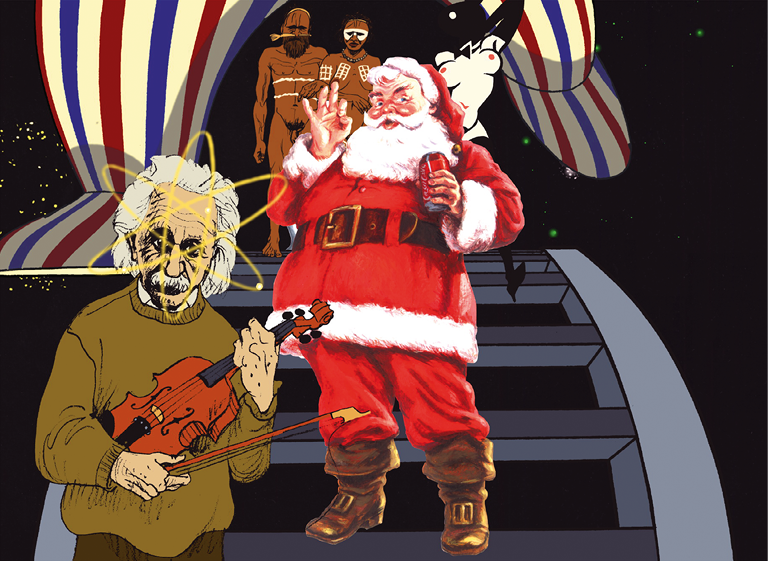
Fig. 5. The Tragedy of Man – Scene 11: O, Fortuna!
From the Hungarian Folk Tales series and John, the Valiant to Son of the White Mare, he creates figures whose feelings and intentions are not projected. Instead, through motion (animation), they extend past their contours. That is, their change of shape is transcendent. Flames of anger often go beyond the figure. Signs of sensuality also exceed the character’s outlines, thus becoming love. Compositions reminiscent of mandalas incessantly exceed the picture’s boundaries. However, the most characteristic manifestation of this is the sun’s being in a state of eternal, dynamic overflow. Marcell Jankovics did more than devote a volume to presenting the sun’s mystical aspects. The sun’s illumination held a cosmic message. Not just in its mythological settings (Hungarian Folk Tales and Son of the White Mare), in profane stories as well, the sun is an emblem of order and physical law. With him, even János Arany’s hero, Toldi, is represented by the sun. ‘Toldi’s mythical basis – in a legendary mantle, enriched with folktale motifs – peeps out from under the other “narrative layers”. Our protagonist’s form bears universal attributes of the sun – those of Samson (to whom the poet refers separately in the third chapter), Heracles, the folk hero János Erős, and Kullervo from The Kalevala. In addition to the hero’s supernatural strength and untamed nature, his mythical basis is alluded to by the work’s division in twelve chapters. Further, he fights a mystical battle with a bull and is compared once to a storm god and another time to the abovementioned mystical animal’ (Jankovics 2018, 19). Is all this alien to the Christian faith? Hardly. This worldview simply has precedents.
The Middle Age could not yet know of animation, but its architecture expressed the same thought by orienting churches to the east. As a symbol of the resurrection, the light of the sun rising at dawn illuminated the shrine from above, causing the frescoes seen on the walls to shine in the light and tell a story. Thus, the builder created a unique dramaturgy of light. He did not suit the holy building to the landscape or the environment, but to the cosmos. The church was not christened, because they believed that the space was already blessed, and they ‘only’ had to arrange it. Knowing this, it is not so hard to imagine why Marcell Jankovics was so attracted to the winged altars of Upper Hungary’s gothic churches. Marcell Jankovics instinctively transplanted this Middle Age outlook into the art world typical of his time. On account of this artistic desire, he is hard to categorise. In his creative means and his style, he could be postmodern. As an individual seeking God’s illuminating light, he is clearly not. This is the thought that ties together the seemingly disparate career. He is at once an educator, a cultural historian, a pedagogue (Jankovics 2015, 2019), a cultural politician – serving on the board of the cultural committee for the FIDESZ Party since 2003, president of the National Cultural Fund from 2010 to 2011, and honorary president of the Hungarian Art Academy since 2020 – a pundit, but first of all an artist. Our time believes in roles, not in a well-rounded life or in missions. Based on the statements he made at the end of his life, it seems as though Marcell Jankovics himself was uncertain whether it was worthwhile to play so many roles. He reassured himself this way: ‘If I had done everything I did not do, I would not have been able to do what I did’ (Fejérvári 2009, 9). His actions speak for him and for our good – and that is to His greater glory.
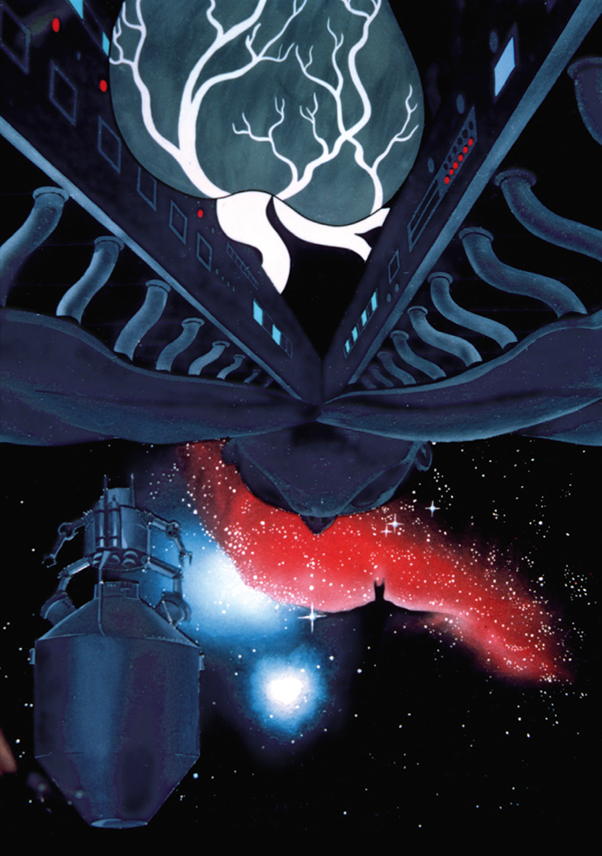
Fig. 6. The Tragedy of Man – Scene 13: Space
References
- Falusi Márton. 2011. „Esszé a fáról, amelyik csak fa akar lenni.” Hitel 2: 54–68.
- Fejérvári Gergely, ed. 2009. Jankovics Marcell. Budapest: MMA Kiadó.
- Hoppál Mihály. 1998. „Népmese és rajzfilm.” In Folklór és közösség, Hoppál Mihály, ed., 137. Budapest: Széphalom Book Könyvműhely.
- Jankovics Marcell. 1996. „Kényszercselekvés és szabad akarat – Vallás és kényszer.” In Ahol a madár se jár, Jankovics Marcell, ed., 198–237. Budapest: Pontifex Kiadó.
- Jankovics Marcell. 1987. Csillagok között fényességes csillag. Budapest: Képzőművészeti Kiadó.
- Jankovics Marcell. 1996. A Nap könyve. Budapest: Csokonai Kiadó.
- Jankovics Marcell. 2018. „A Toldi rajzfilmen.” Magyar Művészet 2: 16–23.
- Jankovics Marcell. 2019. „A vizuális nevelésről.” Magyar Művészet 1: 9–17.
- Jankovics Marcell. 2019. „Az új Nemzeti alaptantervről.” Magyar Művészet 3: 4–7.
- Jankovics Marcell and Méry Gábor. 2000. Felvidéki gótikus templomok. I–XII. album series. Budapest: Méry Ratio Kiadó.
- Jankovics Marcell. 2004. „A fehér ló mondája.” In A szarvas könyve, 91. Debrecen: Csokonai Kiadó.
- Jankovics Marcell. 2015. „Ha nem halunk bele, nem volt semmi értelme.” Interview with Seres Gerda. Kultúra.hu, 28 May. Viewed 8 August 2010. https://kultura.hu/ha-nem-halunk-bele-nem-volt-semmi-ertelme/.
- Jankovics Marcell. Küzdők, naphéroszok, alkimisták. Interview with Lukácsy György. Filmvilág, 2021/3. Viewed 8 August 2010. https://filmvilag.blog.hu/2021/05/31/beszelgetes_jankovics_marcellel.
- Kovács Zsolt. 2001. Hívő vagyok anyám méhétől fogva. Budapest: Kairosz Kiadó.
- Lyotard, Jean-François. 1983. „A posztmodern állapot.” In A posztmodern állapot, Jürgen Habermas, Jean-François Lyotard and Richard Rorty, eds., 8. Budapest: Századvég Kiadó.
- Panofsky, Erwin. 1984. „Ikonográfia és ikonológia: bevezetés a reneszánsz művészet tanulmányozásába.” In A jelentés a vizuális művészetekben, 252–274. Budapest: Gondolat Kiadó.
- Szemadám György. 1987. Jankovics Marcell. Budapest: Corvina Kiadó.
- Varga Zoltán. 2019. „Sziszifusz a csúcson – Jankovics Marcell animációs filmjei.” In Jankovics Marcell, Fejérvári Gergely, ed., 48–49. Budapest: MMA Kiadó.
FOOTNOTES
[1] cf: ‘For the figures in John, the Valiant, Jankovics had to seek out constant attributes – “graphic, ornamental epithets” – in the inevitable and the unchanging. Perhaps that is why he turned to the masks of Kabuki and Noh Theatre. Thus, he was able to learn how they could express a complete inner world. The characters’ faces in John, the Valiant are masks in motion. Compared to the many foreground shots (premier plan) in live-action films, which mostly imitate the span of our attention, the role of facial expressions here was condensed down to minimalism. Naturally, this again raised the question of opportunities for emotional identification with the story. The expressiveness of John, the Valiant solved this difficult problem. The feelings are not only on the faces, but permeate the entire frame. When the protagonist is sad, all the colours are gloomy. When he is cheerful, everything brightens up (Szemadám 1987, 23).
[2] Perhaps his lifework’s most personal study examines the borderlines of religious activity in Judeo-Christian circles. He demonstrates the function of humour, sexual fixations, complexes and repressions that come up in religion, all the way to transgressions – for example, blasphemy (cf: Jankovics 1996, 198–237).
